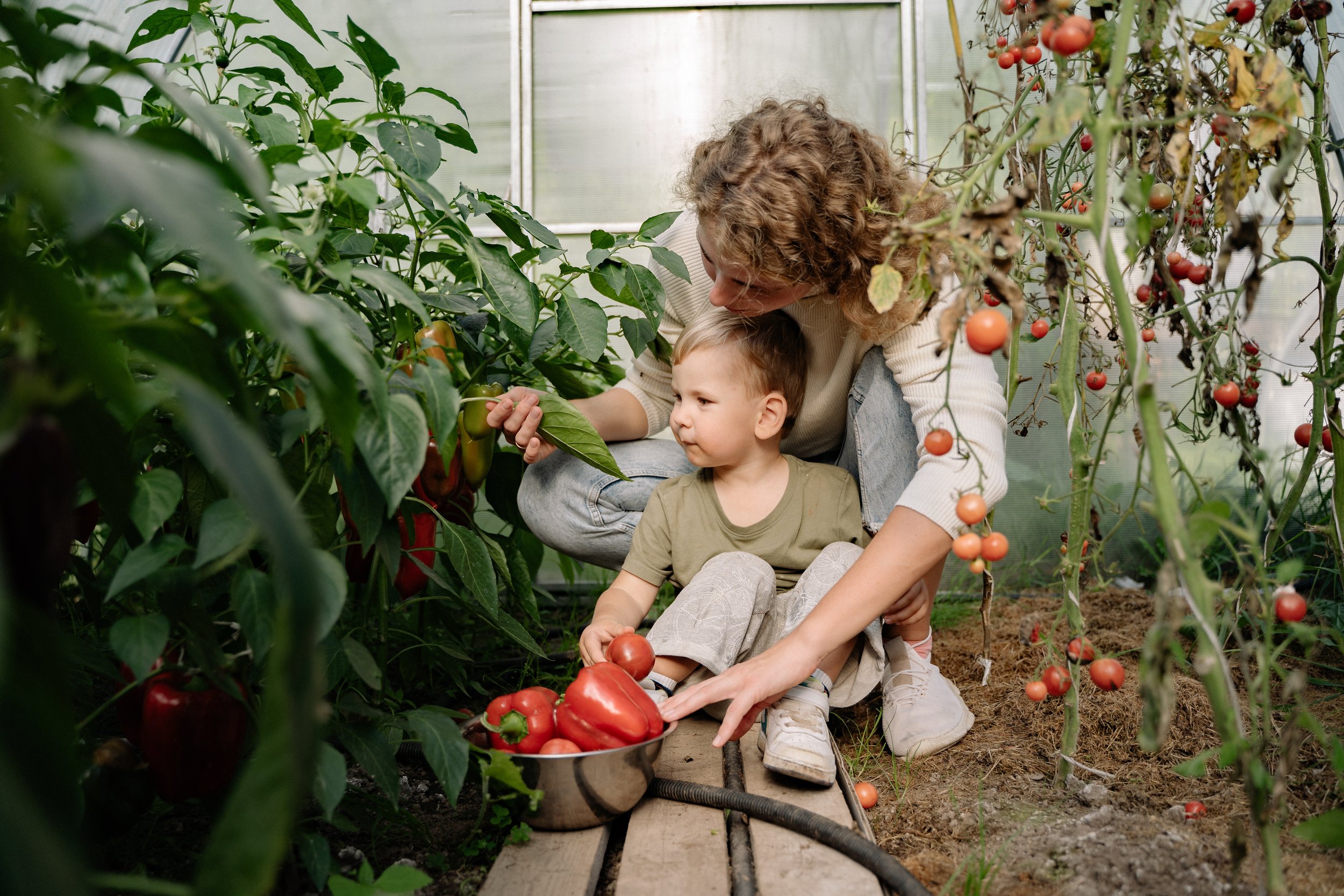Sharing the Magic of Gardening with Kids: Plant & Activity Ideas
Making a summer bucket list? Checking it twice? You might have forgotten to add “gardening with the kids!”
School may be out for summer, but education happens naturally in the garden all year round. The magic of gardening is that your kids won’t even realize how much they’re learning–just as long as you keep it fun and stress-free, of course!
Yet another reason to love gardening is that it can be shared with everyone from bonafide green thumbs to budding sprouts.
Guaranteed: You’ll create a treasure trove of fond memories together.
Create a Sensory Garden
This is what most kids hear all day:
“Don’t touch that!”
“Be careful!”
“Keep away!”
A sensory garden says otherwise. It invites kids to use all their senses in engaging, interacting, and exploring their environment.
Here are some plants that our garden experts have found the most inviting for kids in creating a sensory garden:
Lamb’s Ear
With its silky-smooth, wooly evergreen leaves, the Lamb's Ear plant is impossible not to touch and an easy favorite among youngsters. The foliage resembles the shape of a real lamb's ears, hence the name. Lamb's Ear will produce spikes of pink to purple flowers in the summer.
Herbs
A garden just isn’t complete without herbs. Offering a variety of flavors, textures, and fragrances, herbs are essential for a sensory garden.
Most herbs are fast growers and can be harvested in no time. Herbs grow happily in containers, making it easy for kids to access them.
We recommend lavender, wooly thyme, basil, dill, parsley, chives, and mint (chocolate mint, anyone?).
Nemesia
Kids will love the beauty and fragrance of Nemesia — it smells like vanilla! The vibrant clusters of blooms are often used as ground covers and edging. They’re also great for containers and hanging baskets.
Chocolate Cosmos
The moody and showy effect that Chocolate Cosmos may bring out the dramatic side of your child! Not to worry, everything’s better with chocolate. Chocolate Cosmos not only bear the color of chocolate, they smell like it, too!
Nasturtiums
Nasturtiums are easy-to-grow, versatile flowers. Their edible leaves, petals, and seedpods make them a must-have in a garden for kids.
A delightful companion plant, Nasturtiums attract garden pests driving them away from attacking your veggie crops. They also attract our lovely pollinator friends, including bees, hummingbirds, and butterflies.
2. Grow Fast-growing Annuals
If you’re starting from seed, sow with this tip in mind: the smaller the child, the bigger the seed should be – or you might end up with lots of runaway seeds!
Although gardening teaches a lesson in patience, these plants germinate and grow quickly making them fun and rewarding for kids (especially come harvest time!)
Our picks include peas, beans, sunflowers, and squash.
3. Plant succulents in a bowl
If you’re looking to duck out of the heat and start an indoor garden with your kids, consider planting succulents.
Available in a wide array of shapes, colors, and sizes, succulents are low-maintenance and easy on the water bill. The best part? If your kids forget to water them, the succulents will be just fine.
So grab a large bowl, a succulent variety pack of your kids’ choosing, and plant away!
Pro tips: 1) Choose a mix of colors, and plant the tallest succulents in the center and shorter ones around the edges. 2) If you’re going for a symmetrical look, we recommend growing Echeveria, which has a flower-like appearance.
4. Grow sprouts in a jar
A fun and easy activity to watch seeds grow is growing sprouts in a jar. We’ll bet you already have everything you need to get started!
Here’s all you’ll need:
-a wide-mouth mason jar
-a bowl that’s small enough to lay the mason jar inside at an angle
-a measuring cup to measure out 1 cup of beans
-dry beans (such as lentils or mung beans)
-water
Directions:
-Measure out 1 cup of beans and pour them into the mason jar.
-Add cold water to cover the beans, about 2 inches above them.
-Place the lid on the jar and soak the beans between 12 and 24 hours.
-Pour out the water into another bowl (to water your plants later).
-Rinse the beans with fresh water and pour the water out. Be sure all the water is out of the jar.
-Lay the jar in a bowl at an angle to drain away excess water.
-For the next few days, repeat the rinse and drain process twice a day—once in the morning, once at night. Your kids will be able to see the tiny roots forming out of the beans.
-In the next one or two days, the sprouts will be ready to eat!
Enjoy the sprouts in a salad, a sandwich, or in a stirfry!
5. Paint terracotta pots
Let your little artist go wild by customizing a terracotta pot or two. Then, grow your child’s favorite plant in the pot.
The more personalized and involved kids are in an activity, the likelier it is that they’ll take ownership and see it through.
Gardening with Kids Class
Ready to jump in and garden with your sprouting green thumbs? Join us in June for our gardening class for kids!
Focused on creating a sensory garden, we’ll be potting up flowers, herbs, and succulents in a lovely bowl that you can then take home after class.
All materials will be provided, and we welcome any small toys your kiddos would like to include in their garden. For more details, click here.










